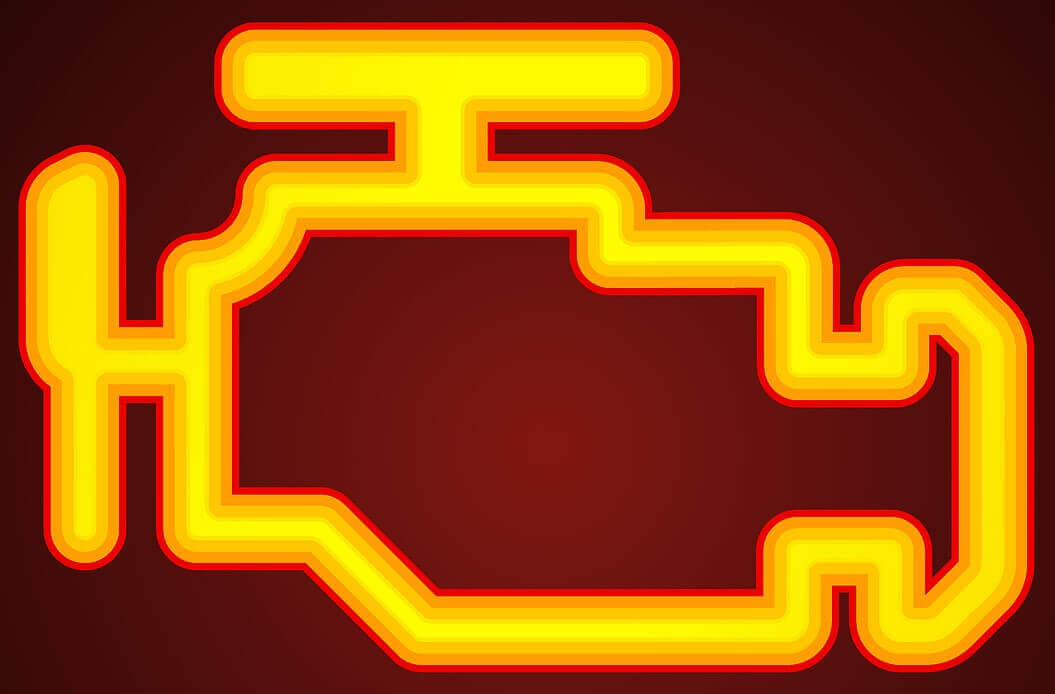The engine management light (EML) is a 'catch-all' dashboard warning light. If your car's brain doesn't know what the problem is, only that something is wrong, this engine shaped light will illuminate.
It will either show up amber, flashing amber or red depending on the severity of the suspected problem. If you see a red engine management light illuminated, you must stop as soon as it's safe to do so and contact your breakdown provider so they can find what's wrong.
However, you can rest assured that sometimes there is a very easy solution to your problem!
Here are 5 reasons why your car’s engine management light might have come on, what this means and how to reset it.
Page Contents
What Can Cause the Engine Management Light to Come On?
The engine management light can come on for a wide range of reasons, and it can be a source of anxiety when it does
However, your vehicle’s engine management light is actually there to give you a chance to fix potential issues with your car.
Whilst it can be difficult to determine the exact cause without a mechanic, here are some of the most likely reasons why your car's EML is illuminated.
Blocked Diesel Particulate Filter (DPF)
Most modern diesel cars have a diesel particulate filter (DPF) warning light.
When the filter becomes blocked, the EML is likely to come on, too.
If the DPF does not regenerate when it needs to – be this active or passive regeneration – then you may need to book in with a professional mechanic.
You may wish to book a DPF clean if the problem is not too severe to try and prevent the diesel particulate filter from becoming blocked.
Ignition System Fault
In a petrol car, a flashing engine management light can indicate there's a problem with the spark plugs or coils.
Petrol-powered cars rely on the ignition system to run the engine, and the car can misfire and lose performance if there is an ignition system fault.
If the spark plugs or coils get old or develop a fault, they will struggle to provide the spark that helps fuel and air combust within the engine.
This can make it hard to start the vehicle and will cause a jerky drive or occasional dips in power whilst driving.
Contaminated Catalytic Converter
You should have a contaminated catalytic converter looked at immediately.
The catalytic converter keeps exhaust emissions as clean as possible.
If the catalytic converter fails, then this can cause the EML on your car to come on.
Not to mention that any issue or damage can lead to a very expensive repair if left to deteriorate.
Oxygen Sensor Malfunction
Modern cars have sensors in their exhaust systems to monitor the oxygen content of exhaust fumes.
These ensure that your car is as efficient and environmentally friendly as possible.
If too much or too little oxygen leaves your car, or there is a fault with the sensor, the check engine light will come on.
Not enough oxygen indicates that your fuel is burning too rich, whilst too much indicates that your fuel is running too lean.
Mass Airflow Sensor Fault
A mass airflow sensor fault can signal that your air filter could be missing, damaged or blocked.
Without the data from this sensor, your engine control unit (ECU) will assume that the engine is getting no air at all and will trigger the EML.
This will protect the engine from overheating and causing serious damage.
You may experience rough idling or jerky acceleration if the engine isn’t burning enough oxygen during combustion.
Your car’s air filter should be changed every couple of years.
Other potential reasons for the engine management light coming on include the following:
- Faulty Exhaust Gas Recirculation Valve (EGR)
- Leaky Vacuum Hose
- Blocked Fuel Injectors
- Blocked Fuel Pump
- Loose Filler Cap
You should drive at a reduced speed to the nearest garage if you experience any of these issues whilst driving.
Many EML issues can be difficult to find without specialist equipment and an expert knowledge of engine fault codes.
That's why you should book a diagnostic check right away if you notice this warning light.
A professional mechanic will be able to identify the issue and reset the engine management light for you.
What Is the Engine Management Light?
The engine management light in your car is an engine-shaped symbol on your car's dashboard.
When it lights up, it can let you know that there is a problem with your car.
It is triggered by the onboard computer system if an engine-related issue is detected.
The engine management light is also known as the check engine light.
What Does My Engine Management Light Look Like?
The engine management light looks like the outline of an engine.

This warning light can also show as the words 'check engine'.
How Do I Reset My Check Engine Light?
Your car’s check engine light will not reset itself.
You need to take it to a garage so that a mechanic can diagnose and fix the fault for you.
Once the issue is resolved, the EML should turn off automatically.
If the light turns back on after the problem is fixed, then you will need to take it back to the garage.
You can book a diagnostic check so that a technician can use state-of-the-art equipment to scan your ECU and find out which error code(s) it is reporting.
Once the technician knows what’s wrong with your vehicle, they will provide you with a quote for the repair and get your car back on the road as quickly as possible.
Why Should I Do Something About My Check Engine Light?
If your car is struggling to run efficiently, this can put additional strain on other related car parts.
Ignoring a check engine light could result in a costly repair later down the line as a result of increased wear and tear.
You may notice a decrease in fuel economy, as your engine will have to work harder to keep you moving.
That can mean higher fuel bills and more regular fill ups.
An illuminated EML light can result in MOT failure if you don’t have the problem sorted and the light reset.
This is considered a major fault.
What Is the Meaning of the Engine Management Light?
Modern cars feature multiple on-board sensors which monitor the performance of the engine and other systems.
Measuring aspects such as the amount of air drawn into the system, the type of emissions produced, and how well the engine is igniting the fuel, a car’s on-board computer can report on how effectively the vehicle is running.
The engine management light doesn't indicate a specific fault – unlike other warning lights – but it can alert you that there is an issue with your vehicle.
The EML usually lights up when you start the vehicle, and should switch off after a few seconds.
If the light stays on or starts flashing, then that means that there could be a problem with the engine or another related issue.
Some EML problems are far more serious than others, as indicated by the type of light that is illuminated.
Steady Amber Engine Management Light
A steady amber engine management light - which could look yellow or orange - usually indicates that there is an issue with emissions.
This is the least severe type of check engine light you may see.
If a yellow engine management light comes on, you should be able to finish your journey - provided the vehicle isn't experiencing a lack of power.
Even so, you should book a diagnostic check with a mechanic as soon as you reach your destination.
Flashing Amber Engine Management Light
A flashing amber EML is more serious than a steady amber light.
This type of engine management light means that there may be a critical problem with the catalytic converter or another vital component.
You should stop driving right away and contact a mechanic.
Steady Red Engine Management Light
A steady red engine management light means that there is a critical issue with your car.
You should stop driving if you see a red engine management light and call your breakdown cover provider right away.
Emission Control Light
Another related warning light to be aware of is the emission control light.
This light indicates there is a problem with your car's emission control system, such as a catalytic converter or exhaust gas recirculation (EGR) issue.
Problems that are detected by the emissions control system can also trigger the engine management light to come on.
FAQs
How Fast Can I Drive in Limp Home Mode?
How Long Can I Drive with the Engine Management Light On?
Can Low Oil Cause the Engine Management Light to Come On?
Is It Safe to Drive with the EML On?
Can I Keep Driving If I Lose Power?
.jpg&w=3840&q=75)





